Rondo is a company known for doing things differently.
Its debut bike, the Ruut, was the first to feature its patented Twin Tip fork, where you flip an insert in the dropout to switch between high and low positions, effectively changing the geometry.
It was used to brilliant effect on the 2019 Bike of the Year-winning aero-road/gravel-racer, the Rondo HVRT.
With the RATT, Rondo has again pushed against the boundaries. How many endurance bikes can you think of, for example, that come equipped with 47mm-wide slick tyres and 650b wheels?
The RATT is described as taking “the standard of all-road bikes to a new level by combining the speed of a classic road bike, with the all-road character of a modern gravel bike for ultimate riding freedom”. That’s quite the pitch.
In reality, there are some limitations to the specification here. Nevertheless, the RATT deserves to be considered as an outside-the-box endurance bike and makes the list of our 2023 Bike of the Year test.
Rondo RATT CF2 frame details
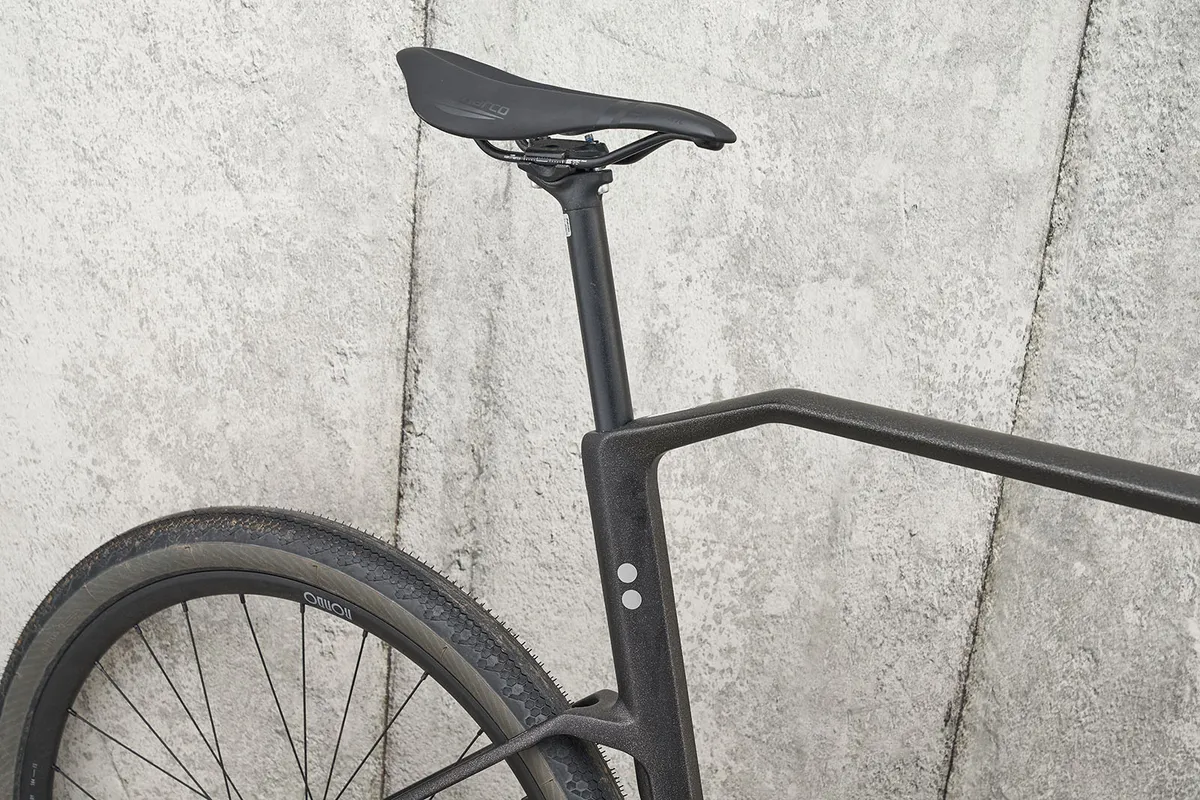
The RATT’s unconventional design looks like the result of a Brutalist architect’s fever dream sketch of a bike. It looks different from anything on the market right now and it’s certainly going to divide opinion.
Personally, I love the angular shape and hard-edged tube shapes; it creates a unique silhouette.
The RATT is designed to be a fast road bike with 650b wheels, though it can be run with 700c wheels too. A road-oriented 650b-wheeled bike isn’t entirely new, and based on the evidence provided here there’s still plenty going for small wheels and big tyres.
The forward kink from the fork crown to the fork legs is a very distinctive design choice. Its purpose is to elongate the path of chatter from the road surface under the front wheel to dissipate vibrations and add a layer of comfort.
The fork is the latest design to feature Twin Tip dropouts that change the bike from an all-road biased ‘low’ position, to an on-road ‘high’ position, effectively shortening the trail and steepening the head angle.
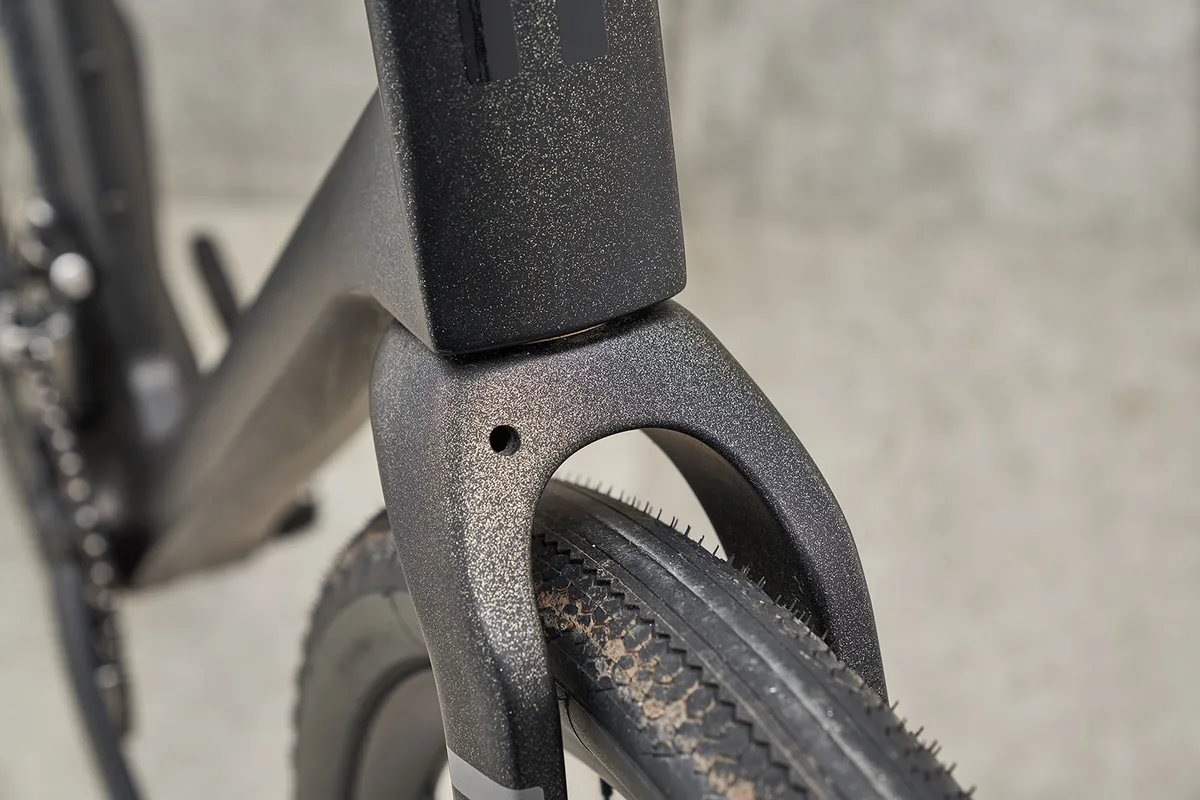
The RATT gets huge tyre clearances in both 650b and 700c incarnations (47mm and 38mm respectively).
The fine details are present, with full internal cable routing and even internal routing capacity for a front dynamo light.
Twin bottle bosses are present, as are threaded bosses on both front and rear dropouts for mudguards.
Rondo claims a weight of 1,000g for a medium-sized frame and while the angular aesthetic may not be conventional, it’s all designed to be functional.
Rondo says the thinking behind the forward-shifted fork crown, kinked top tube and skinny seatstays that kink at both the seat tube and chainstay junctions, is to create “passive suspension zones”. These are areas that flex to provide comfort-improving compliance.
Rondo RATT CF2 geometry
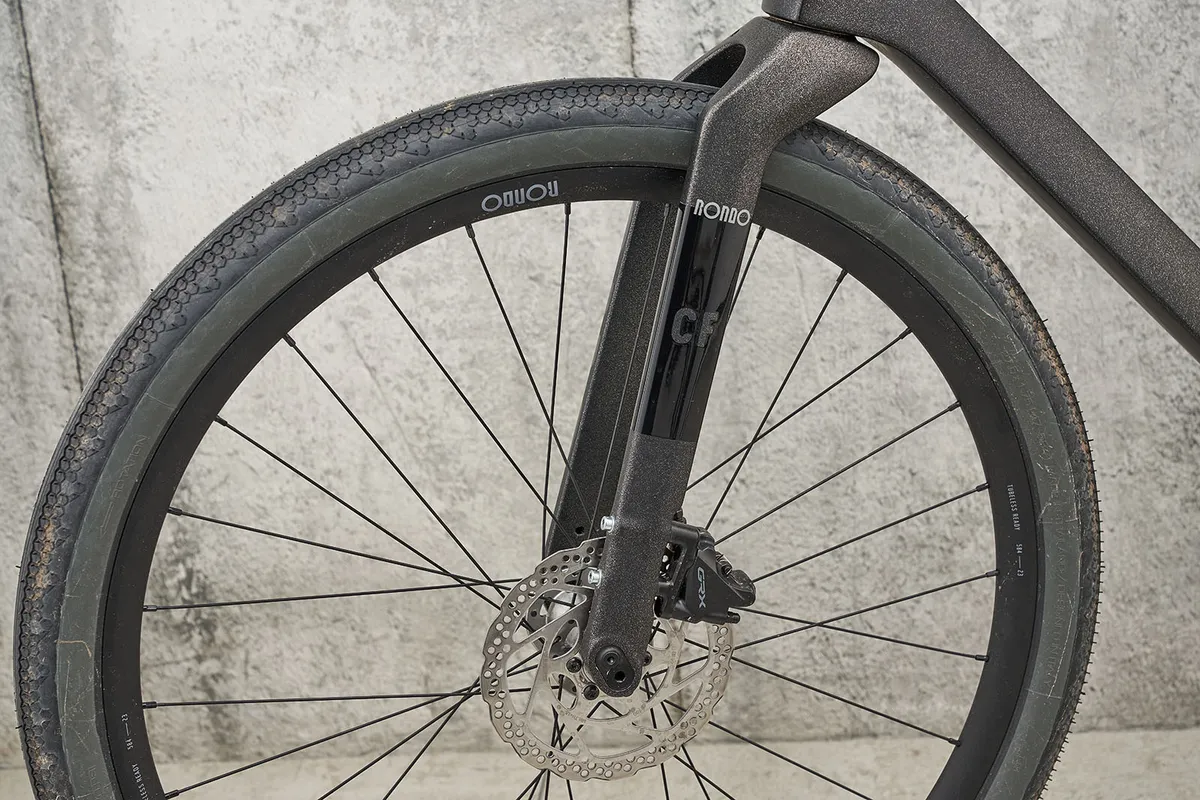
At the heart of the RATT is switchable geometry, thanks to the Twin Tip fork.
The ‘low’ 50mm setting on the fork, combined with the rest of the frame geometry, is designed to mimic a typical endurance road bike with 700x28c tyres.
Rondo says the advantage is you get extra grip and comfort thanks to the wide 650b tyres, while keeping the same handling as a regular road bike.
A tyre this large will add weight and some inertia versus a narrower 700c setup, but Rondo claims it’s offset by the smaller-diameter wheels.
With the Twin Tip fork offset at the lower 50mm setting, the trail is reduced to a super-short 43.05mm (for context, this is more than 10mm shorter than your average race bike).
In the longer 60mm setting, the trail shifts up to 58.25mm, about what you’d expect from an all-road biased endurance bike or even a gravel bike.
In Rondo terms, that means the RATT’s slacker low setting is close to the Ruut’s gravel setup. In its steeper high setting, it’s close to the HVRT (on the HVRT’s more relaxed setting).
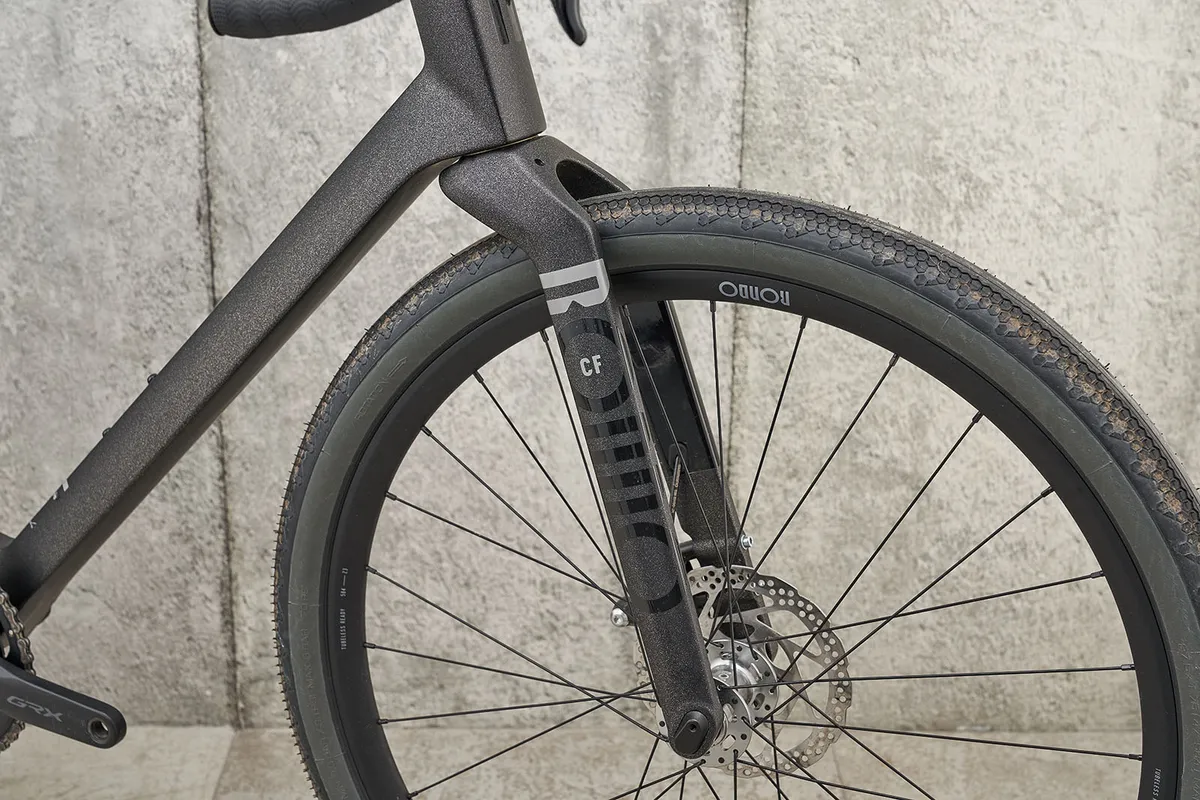
The idea here is the RATT can be switched between a road bike or near full-on gravel bike in five minutes with a multi-tool to move the fork between settings.
My XL (58cm) test bike has either a 73.1-degree head angle in the high setting, or a slightly more relaxed 72.3 degrees in the low setting.
The seat angle is 73 or 73.8 degrees, respectively, while the stack switches between 620 and 627mm, and the reach between 395 and 403mm.
Whichever setting is chosen, the RATT inhabits the sportier side of endurance and gravel geometry.
When you add in the relatively short wheelbase of 1,037mm and short 420mm chainstays, the RATT is more than a simple balloon-tyred cruiser.
| | 51 | 54 | 56 | 58 |
|---|---|---|---|---|
| Lo / Hi | Lo / Hi | Lo / Hi | Lo / Hi | |
| Seat angle (degrees) | 73 / 73.8 | 73 / 73.8 | 73 / 73.8 | 73 / 73.8 |
| Head angle (degrees) | 72.3 / 73.1 | 72.3 / 73.1 | 72.3 / 73.1 | 72.3 / 73.1 |
| Chainstay (mm) | 415 / 415 | 415 / 415 | 415 / 415 | 420 / 420 |
| Seat tube (mm) | 490 / 490 | 520 / 520 | 540 / 540 | 570 / 570 |
| Top tube (mm) | 531 / 529 | 550 / 547 | 565 / 563 | 577 / 574 |
| Head tube (mm) | 125 / 125 | 150 / 150 | 175 / 175 | 195 / 195 |
| Fork offset (mm) | 50 / 60 | 50 / 60 | 50 / 60 | 50 / 60 |
| Trail (mm) | 57 / 41 | 57 / 41 | 57 / 41 | 57 / 41 |
| Bottom bracket drop (mm) | 65 / 71 | 65 / 71 | 65 / 71 | 65 / 71 |
| Wheelbase (mm) | 980 / 986 | 999 / 1,050 | 1,014 / 1,021 | 1,031 / 1,037 |
| Stack (mm) | 529 / 523 | 552 / 547 | 576 / 571 | 596 / 590 |
| Reach (mm) | 370 / 377 | 381 / 388 | 389 / 397 | 395 / 403 |
| Fork length (mm) | 380 / 370 | 380 / 370 | 380 / 370 | 380 / 370 |
Rondo RATT CF2 build
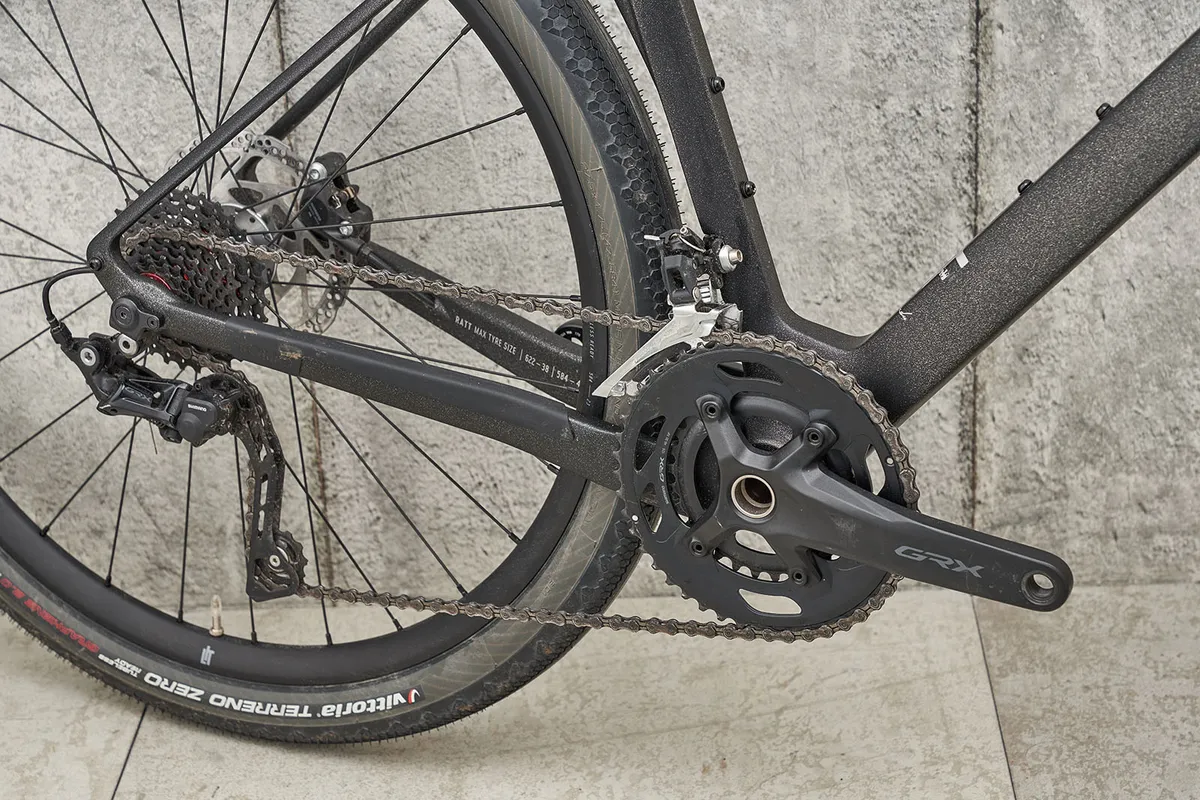
The CF2’s build is based around Shimano’s mechanical 10-speed GRX400 groupset (with some GRX600 components, such as the levers and crankset, thrown in).
The 46/30-tooth chainset is matched to an 11-32-tooth cassette. It’s an ample range and a bottom-gear combination of 30/32t provides a climbing gear that will keep your pedals turning no matter how steep the gradient.
The shifting at the rear derailleur is crisp, and the clutched mechanism helps control chain bounce very well.
The front-derailleur shifts are a little sluggish compared to, for example, Shinano’s road-going mechanical 105 R7000. When you're approaching either end of the 11-32t cassette at the rear you need to use the trim function on the front shifts to prevent a bit of chain rub.
The braking is good, with plenty of power and more than enough control. I got a little scrape from the rotors on a particularly wet road ride, but this is fairly common in the worst conditions.
The Easton EC70SL bar has a superb shape. The compact drops mean you can get down low without over-stretching, and the ovalised and flattened shape on the tops is comfortable for long stretches.
The Rondo-designed stem is angular like the frame, and routes the brake hoses internally.
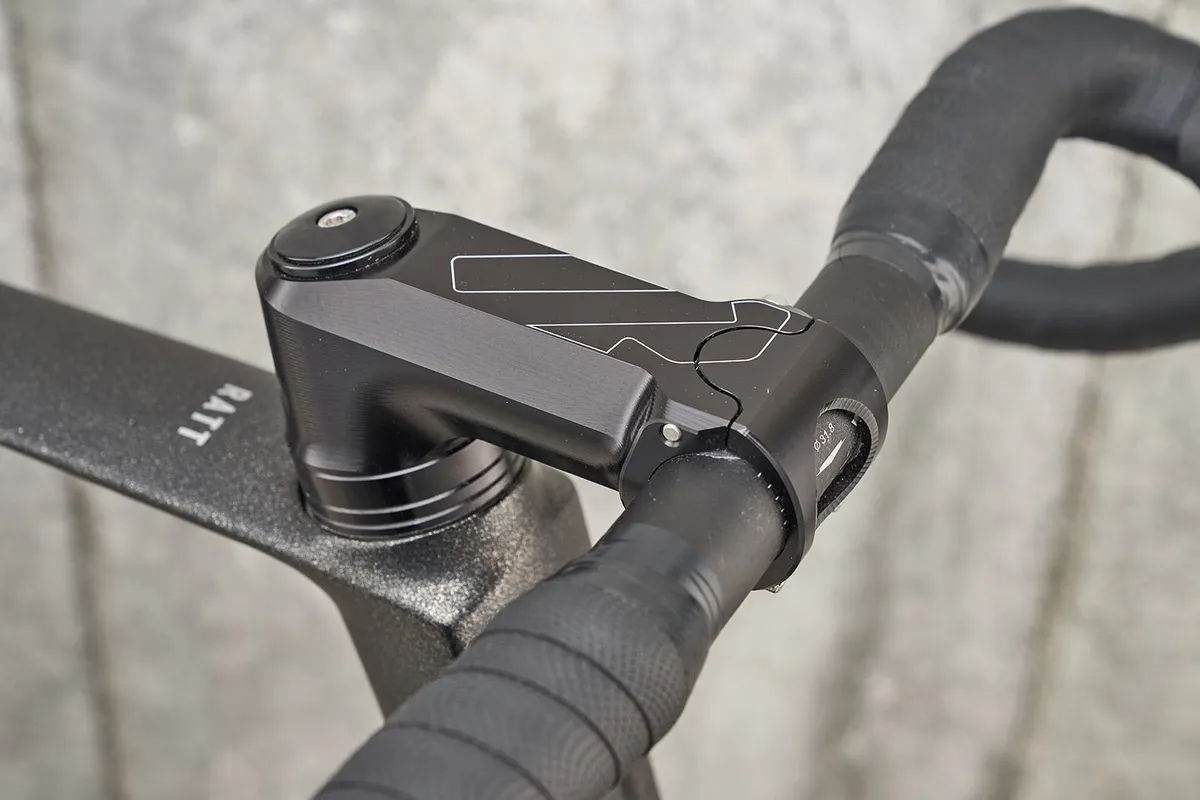
Its two-bolt hinged design works well, although I’m not sure what the practical upside is versus a standard stem faceplate. It’s in keeping with the RATT’s whole design aesthetic, however.
At the back, a simple alloy seatpost with a 20mm offset is topped with a Selle San Marco Shortfit saddle. Its 250mm length and 144mm width make for a compact perch.
In my opinion, it’s one of the most comfortable road bike saddles and well suited to the diverse purposes of the RATT.
The wheelset is of Rondo’s own design. The shallow alloy rims are tubeless-ready and have a generous 23mm internal width from hook to hook.
The Rondo Superlight hubs are finished sharply in anodised silver/grey and run on cartridge bearings.
The wheels are shod with Vittoria’s Terreno Zero tubeless-ready tyres. The Terreno range is gravel-specific bar this version, which features a very low-profile tread to aid rolling speed and all-weather grip on the road.
The CF2, at £3,599, is the least expensive entry in the 2023 Bike of the Year endurance bike category. That said, value is relative (as always).
For the specification on offer, it is expensive – the Merida Scultura Endurance (£3,400) gets a superior drivetrain in the shape of wireless 12-speed SRAM Rival AXS.
Cannondale’s Synapse Carbon 3 L comes with mechanical 105 and SmartSense lights for £3,200 and Specialized’s Roubaix Sport is 105-equipped for £3,500.
Of course, these bikes take a different (more typical) approach to endurance bike design, but the RATT remains an investment if you want something that contrasts with the norm.
Rondo RATT CF2 ride impressions
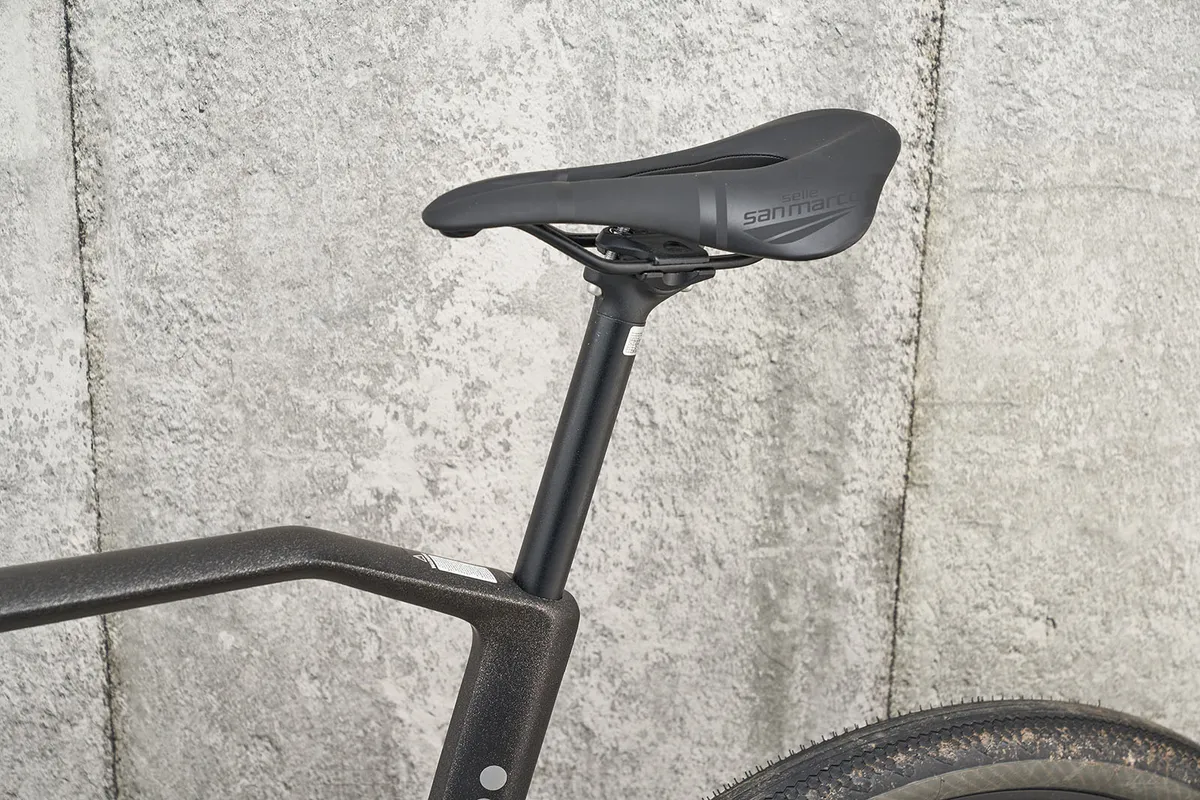
The initial feeling from the RATT is you’re riding something very different from your average road bike.
I thought the wide tyres would make accelerations feel dull and slow, but because the wheels are smaller and the tyres deeper, the diameter of the wheel is only around 15mm smaller than a 700c wheel with a 30c tyre fitted.
It means even with the 47c tyre, the RATT feels quick to get up to speed. Once you’re there, though, it takes a little more effort to maintain the sort of pace you can on larger-diameter wheels.
The RATT’s real strengths come through on rough roads. The sense of smoothness of the frame and tyres together means it shrugs off vibrations.
You have the confidence to smash through frost-scarred tarmac, most potholes, traffic-calming measures, and so on.
If you experiment with dropping tyre pressures as needed through your ride, it’s astonishing how capable the bike is – it makes every ride a lesson in smoothness.
I quickly came to see the RATT as the ‘ultimate shortcut bike’. See a byway, trail or double-track farm road connecting the road you want to be on, and the RATT can take it all in its stride.
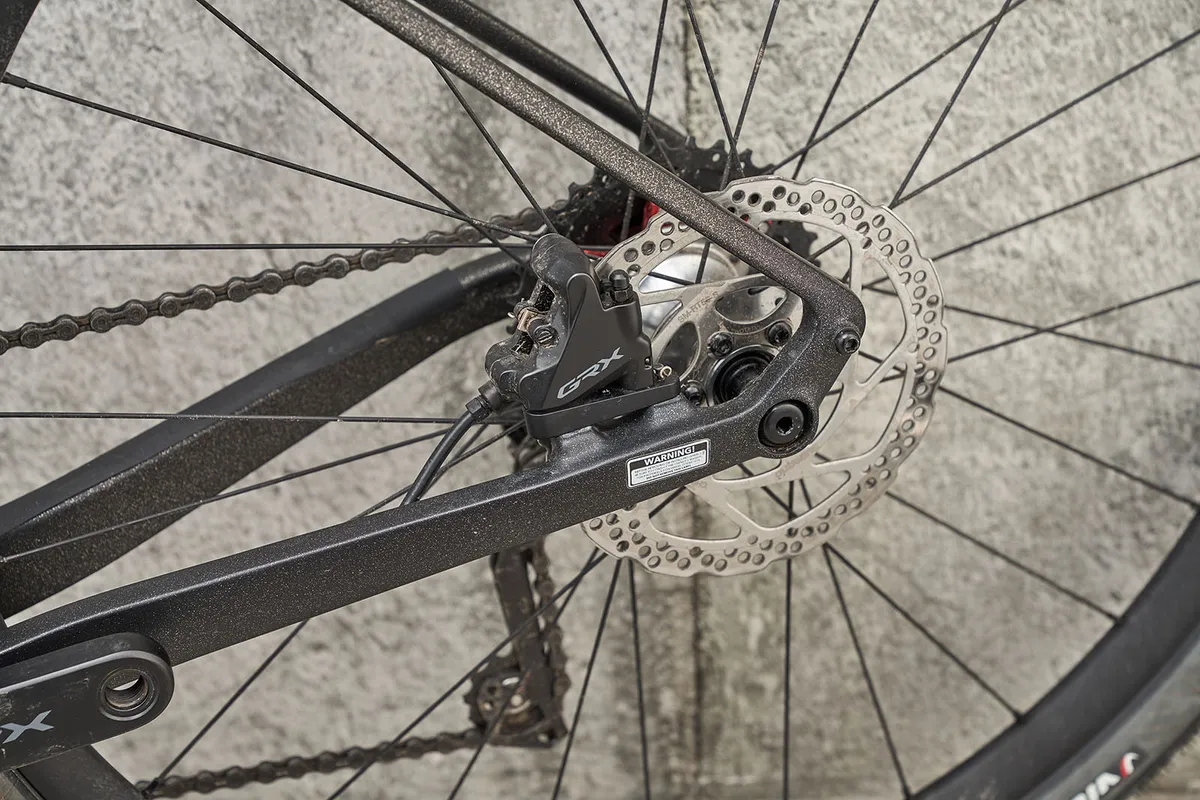
On group road rides, the smaller-diameter wheels will mean you’re putting in a little more effort than your 700c-wheeled buddies on rolling roads, especially when it comes to long extended climbs.
However, when it comes to the descents, you’ll probably leave everyone behind.
The gargantuan levels of grip afforded by the wide Vittoria tyres means you can reach extraordinary lean angles and have absolute faith the RATT will stick.
It’s easy to hit your chosen cornering line (the RATT responds to inputs quickly and accurately), and you don’t need to correct or divert around broken road surfaces, thanks to the properties of the tyres.
The RATT therefore, perhaps more than any other bike of its type, is a product of its spec choices.
Overall, the RATT handles beautifully. In the steeper-geometry setup, it feels precise and easy to control, though you don’t really have to worry too much because it’ll get you through most road surface obstacles without drama.
In the more relaxed setting, it’s as capable on gravel as most race-oriented gravel bikes. The handling slows a little, but that just lends even more predictability when you don’t need the sharpness.
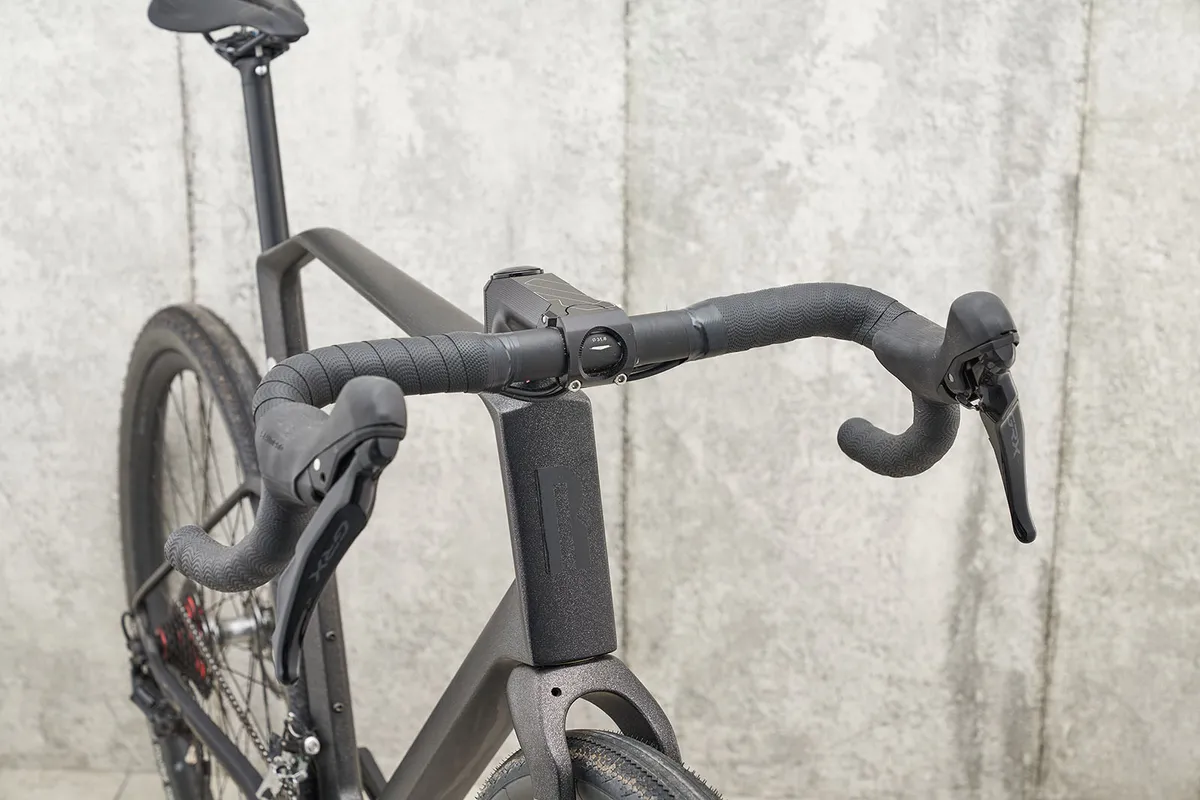
The contact points are superb, the Easton bar is wrapped in luxuriously thick bar tape and the San Marco saddle is a good fit for the bike’s diversity.
The Rondo-designed wheels are robust and they feel quick to pick up.
You can’t really compare a wheel’s dynamic stiffness or compliance that closely when wrapped in a 650x47b tyre, especially against the norm of 700c setups.
On balance, though, the wheels performed well and are fit for purpose.
Rondo RATT CF2 bottom line
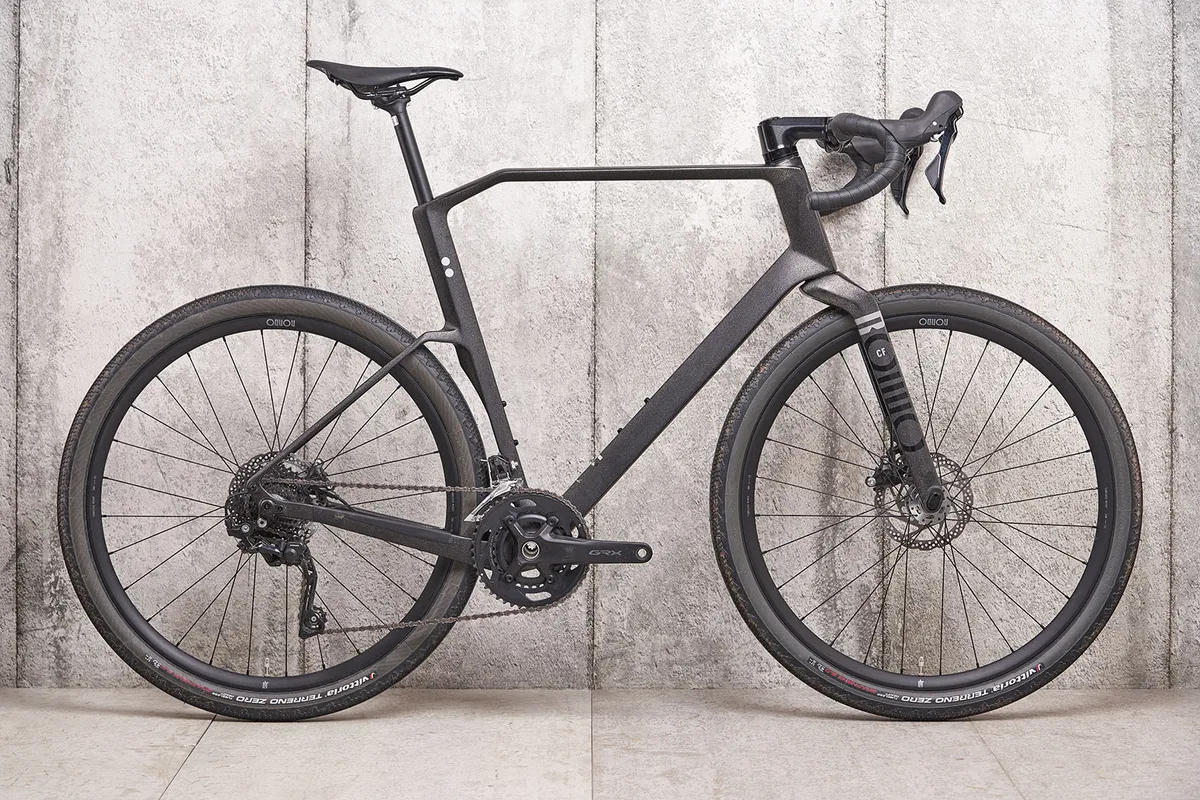
The RATT CF2 is a radical departure for an endurance bike and one that I’ve enjoyed thoroughly. It’s one of the best bikes I’ve ever pointed downhill on tarmac, and one of the best at coping with poor road surfaces.
The Rondo excels, especially when you take the time to play with your tyre pressures to suit the conditions.
However, as specced here, you pay for it on climbs and flat terrain, no matter how much pressure tinkering you do (arguably necessitating a secondary 700c wheelset to make the most of the RATT’s flexibility).
Plus, at £3,599, a 10-speed mechanical groupset and alloy wheels feel a little paltry, even if they perform acceptably.
However, overall, I’m enamoured with how well the RATT rides, and how much fun I can extract from it.
Endurance Bike of the Year 2023 | How we tested
Each of the bikes selected for our Bike of the Year 2023 endurance category was first given a high-tempo two-and-a-half-hour ride to see if any adjustments needed to be made.
The meat of the testing took place over an 82-mile/132km route.
It was then a case of riding the bikes back-to-back and eliminating them one by one until I was left with the best of the bunch.
My decision reflects each bike's balance, how well it handles, how it's equipped and, most importantly, how much fun it is to ride.
For the endurance bike testing alone, I notched up in excess of 1,200 miles/1,931km.
Our Endurance Bike of the Year contenders
- Wilier Granturismo SLR UDi2
- Rondo RATT CF2
- Vitus Venon Evo Force AXS
- Cervélo Caledonia Rival
- Merida Scultura Endurance
Thanks to…
Thanks to our sponsors, Lazer, FACOM tools and Band Of Climbers for their support in making Bike of the Year happen.
Product
| Brand | rondo |
| Price | 3799.00 EUR,3599.00 GBP |
| Weight | 9.7600, KILOGRAM (XL) - |
Features
| Fork | TwinTip 2.0 Carbon |
| br_stem | Rondo CNC 90mm (S, M), 110mm (L, Xl) |
| br_chain | Shimano HG500 |
| br_frame | Ratt Fly Carbon |
| Tyres | Vittoria Terreno Zero 650b X 47 |
| br_brakes | Shimano BR-RX410 |
| br_cranks | Shimano GRX FC-RX600 46/30 |
| br_saddle | Selle San Marco Shortfit |
| br_wheels | Rondo Lit: Rondo Superlight Sealed Bearing Hubs, Rondo Lit Rim 584-23 |
| br_shifter | Shimano GRX RX600 |
| br_cassette | Sunrace CSR0 Tau 11-32 10 Speed |
| br_seatpost | Rondo 350 X 27.2 |
| br_gripsTape | Velo Comfort Tape |
| br_handlebar | Easton EC70SL 440mm |
| br_bottomBracket | Evo 386 With HTII Adapter |
| br_availableSizes | S, M, L, XL |
| br_rearDerailleur | Shimano GRX RD-RX400 |
| br_frontDerailleur | Shimano GRX |
